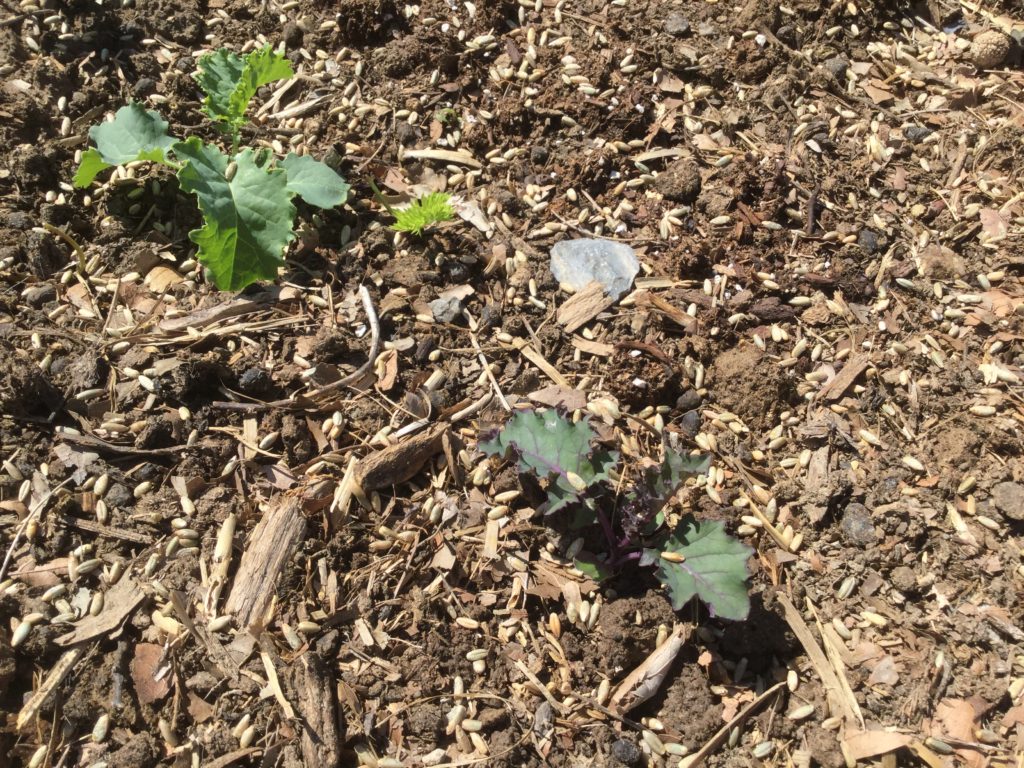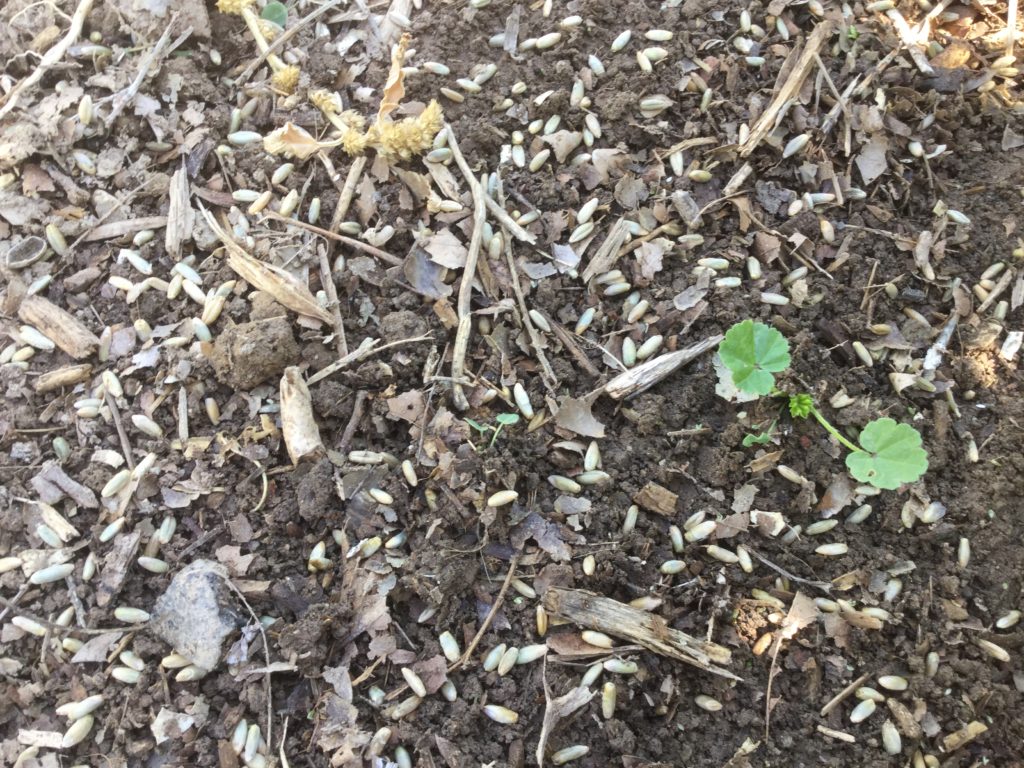
Using cover crops is an important part of regenerative agriculture, permaculture and organic gardening. Winter rye is an excellent cover crop this time of year, it loves the cold and will contunie to grow, even when temperatures reach below freezing. Its growth slows down considerably when the days get shorter, and goes into a hibernation mode, then picks right back up as the spring days get longer and warmer, completing its life cycle in time for market crops to be planted.
Rye has several advantages beyond its ability to grow in the cool fall and spring weather. It creates considerable biomass, I always love the biomass, and mowed in the spring acts as a mulch, keeping in moisture and making it harder for weed seeds to germinate. Once the rye is mowed down the roots will start to decompose adding organic matter and nutrients right into the soil, where it is needed. Rye can bind nitrogen, making it harder for market crops to access, but adding a legume with the rye helps that. This year we aren’t set up to add clover or vetch, instead we will add blood meal or fish emulsion come spring to help with nitrogen deficiency, we will also sow clover this spring.
Rye can easily take over other, small seeded plants when planted at the same time. This is one advantage to starting seeds separately. The kale shown at the top was planted before the carrots were harvested, able to grown nice and big and then given a week in the ground before the rye was planted. That gave the kale three weeks head start before the rye needed to be sown and we didn’t have to rush the carrots. The kale will have no problem growing among the rye, where as if they had started as seeds at the same time the rye would have quickly over taken the smaller and slower rye.

